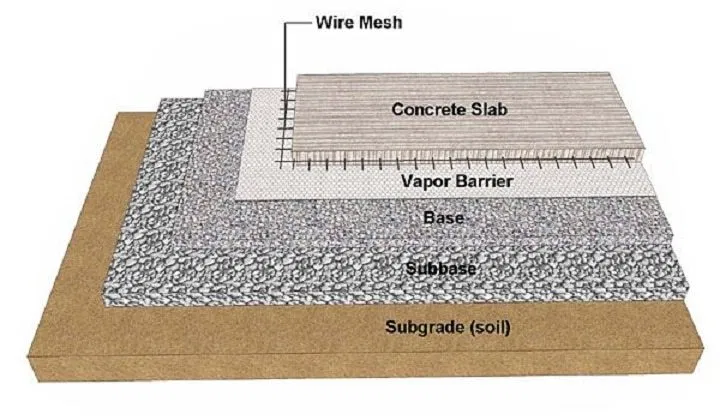Gravel is commonly used as a base material for concrete, but whether or not you need it depends on the specific circumstances of your project. Here are some factors to consider when deciding whether or not to use gravel under concrete:
Soil Conditions: If the soil beneath the concrete is unstable or prone to settling, using gravel as a base material can help prevent the concrete from cracking or sinking over time. Gravel provides a stable base and helps distribute the weight of the concrete more evenly.
Drainage: If you live in an area with heavy rainfall or poor drainage, using gravel as a base material can help prevent water from pooling beneath the concrete. This can reduce the risk of erosion, cracking, and other problems caused by moisture.
Frost heave: If you live in a region with freezing temperatures, the ground may freeze and expand during the winter months, which can cause the concrete to crack or lift. Using gravel as a base material can help prevent frost heave by allowing moisture to drain away from the concrete and reducing the risk of freezing.
Load-bearing capacity: If the concrete will be supporting heavy loads, such as cars or trucks, using gravel as a base material can help distribute the weight of the load more evenly and reduce the risk of cracking or sinking.
Cost: Using gravel as a base material can add to the cost of the project, both in terms of materials and labor. If the soil conditions and other factors are favorable, it may be possible to skip the gravel and pour the concrete directly into the soil.
If you decide to use gravel as a base material for your concrete project, here are some general guidelines to follow:
Excavate the area: Start by excavating the area where you plan to pour the concrete. Remove any vegetation, rocks, or other debris from the site. The depth of the excavation will depend on the thickness of the concrete slab and the depth of the gravel base.
Level the surface: Use a compactor or hand tamper to level the soil surface. This will provide a stable base for the gravel.
Add gravel: Spread a layer of gravel over the soil surface, making sure it is level and compacted. The thickness of the gravel layer will depend on the specific circumstances of your project, but a common thickness is 4 to 6 inches.
Compact the gravel: Use a compactor or hand tamper to compact the gravel, making sure it is evenly distributed and level.
Add a vapor barrier: If moisture is a concern, consider adding a vapor barrier on top of the gravel layer. This can help prevent moisture from seeping up through the soil and into the concrete.
Pour the concrete: Once the gravel base is in place, you can pour the concrete slab. Make sure the concrete evenly distributed and level.
In summary, whether or not you need gravel under concrete depends on the specific circumstances of your project. Gravel can provide a stable base, improve drainage, prevent frost heave, and distribute weight more evenly. However, it can also add to the cost of the project. If you’re unsure whether or not to use gravel, consult with a professional contractor or engineer who can assess the soil conditions and other factors and make a recommendation.

